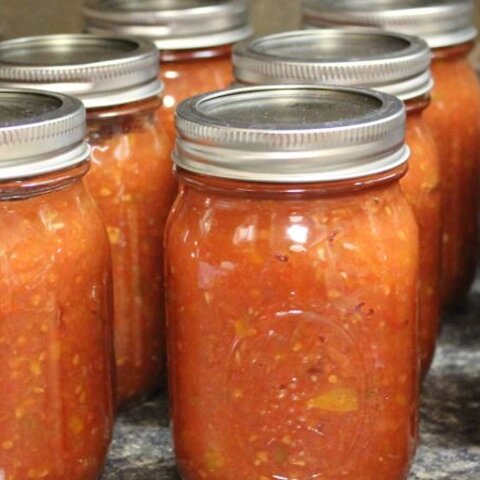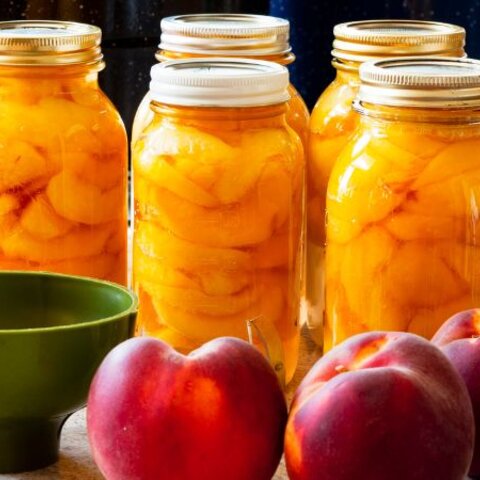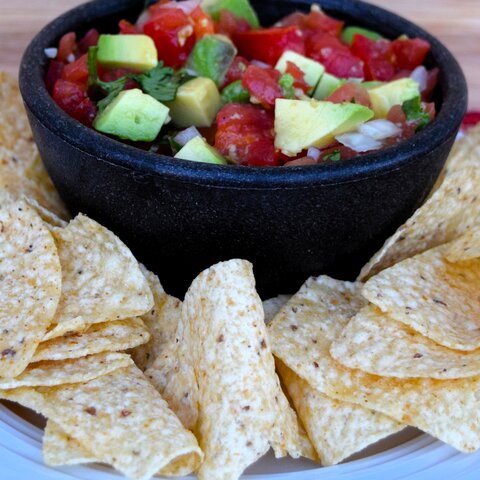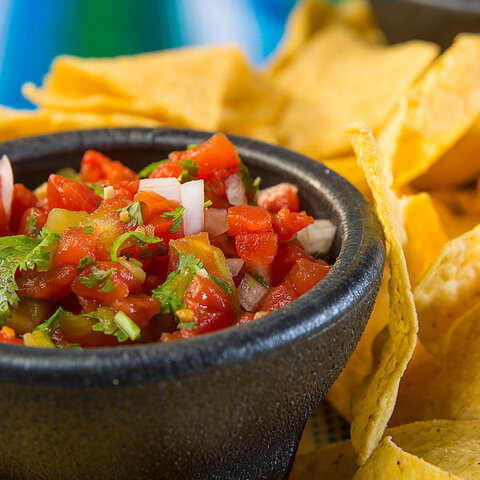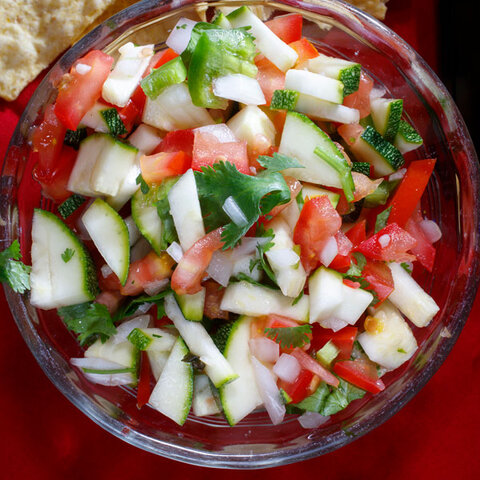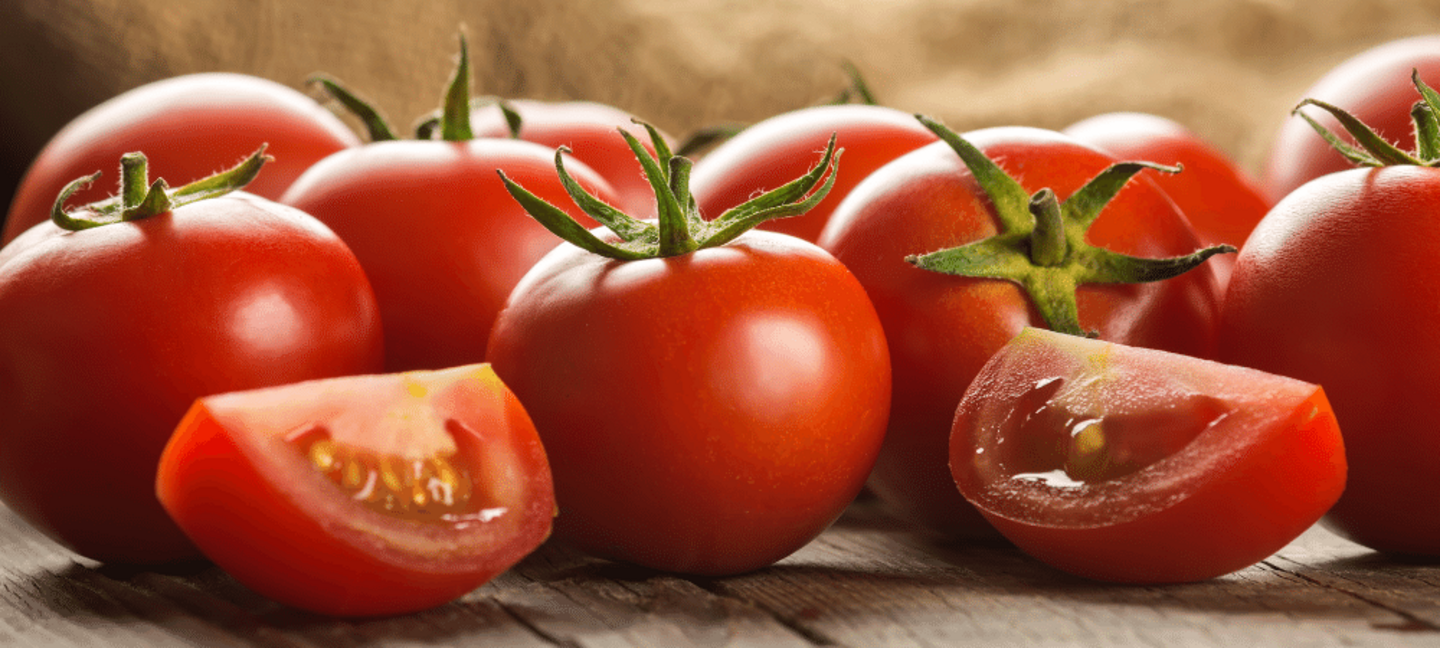
Did you know that you can freeze raw tomatoes with and without their skins? Tomatoes may be frozen raw or cooked, whole, sliced, chopped, or puréed. Tomatoes do not need to be blanched before freezing. Frozen tomatoes are best used in cooked foods such as soups, sauces and stews as they become mushy when they're thawed. To use the frozen tomatoes, remove them from the freezer a few at a time or all at once and then use them in any cooked-tomato recipe.
Methods for Freezing Tomatoes
Season tomatoes right before serving rather than before freezing. Freezing may cause seasonings such as garlic, onion, and herbs to either strengthen or weaken. Choose one of the following methods to freeze raw tomatoes.
Freezing Whole Tomatoes With Peels
- Select firm, ripe tomatoes for freezing. Sort the tomatoes, discarding any that are spoiled.
- Gently rub tomatoes under cold running water and then dry with a paper towel or a clean cloth.
- After washing, cut away the stem scar and surrounding area and discard it.
- Place the whole tomatoes on clean cookie sheets and freeze.
- Once frozen, transfer the tomatoes from the cookie sheets into freezer bags or other containers. Seal tightly and freeze.
Freezing Peeled Whole Tomatoes
- Select firm, ripe tomatoes for freezing. Sort the tomatoes, discarding any that are spoiled.
- Gently rub tomatoes under cold running water and then dry with a paper towel or a clean cloth.
- After washing, cut away the stem scar and surrounding area and discard it.
- Dip tomatoes in boiling water for about 1 minute or until the skins split to peel easier.
- Place the whole tomatoes on clean cookie sheets and freeze.
- Once frozen, transfer the tomatoes from the cookie sheets into freezer bags or other containers. Seal tightly and freeze.
Freezing Tomato Juice
- Select firm, ripe tomatoes for freezing. Sort the tomatoes, discarding any that are spoiled.
- Gently rub tomatoes under cold running water and then dry with a paper towel or a clean cloth.
- Cut into quarters or eighths.
- Place tomatoes in saucepan and simmer 5 to 10 minutes.
- Press tomatoes through a sieve.
- If desired, season with 1 teaspoon salt to each quart of juice.
- Pour into containers, leaving the following headspace.
Headspace for
Wide Top ContainersPint Quart 1/2 inch 1 inch Headspace for
Narrow Top ContainersPint Quart 1 1/2 inch 1 1/2 inch - Seal and freeze.
Freezing Stewed Tomatoes
- Select firm, ripe tomatoes for freezing. Sort the tomatoes, discarding any that are spoiled.
- Gently rub tomatoes under cold running water and then dry with a paper towel or a clean cloth.
- After washing, cut away the stem scar and surrounding area and discard it.
- Dip tomatoes in boiling water for about 1 minute or until the skins split to peel easier.
- Cut into quarters.
- Put tomatoes in saucepan. Cover and cook until tender (10 to 20 minutes).
- Place pan containing tomatoes in cold water to cool.
- Pack into containers, leaving the following headspace.
Headspace for
Wide Top ContainersPint Quart 1/2 inch 1 inch Headspace for
Narrow Top ContainersPint Quart 3/4 inch 1 1/2 inch - Seal and freeze.
Packaging Food for the Freezer
Suitable freezer containers include:
- Plastic freezer bags
- Freezer paper
- Heavy duty aluminum foil
- Plastic containers with the snowflake symbol
Containers not suitable for long-term freezer storage (unless they are lined with freezer bag or wrap) include:
- Plastic food storage bags
- Milk cartons
- Cottage cheese cartons
- Whipped topping containers
- Butter or margarine containers
- Plastic bread or other product bags
Storing Frozen Tomatoes
To extend the time frozen foods maintain good quality:
- Package foods in material intended for freezing.
- Keep the temperature of the freezer at 0 degrees Fahrenheit or below.
- It is generally recommended frozen vegetables be eaten within about 8 months for best quality.
Updated in 2020 by Kayla Colgrove. This article was originally writtten by Alice Henneman.
Source:
- Freezing Tomatoes, National Center for Home Food Preservation
- Tomatoes: Safe Methods to Store, Preserve, and Enjoy, The University of California Division of Agriculture and Natural Resources
- Containers for Freezing, National Center for Home Food Preservation
Tags:
